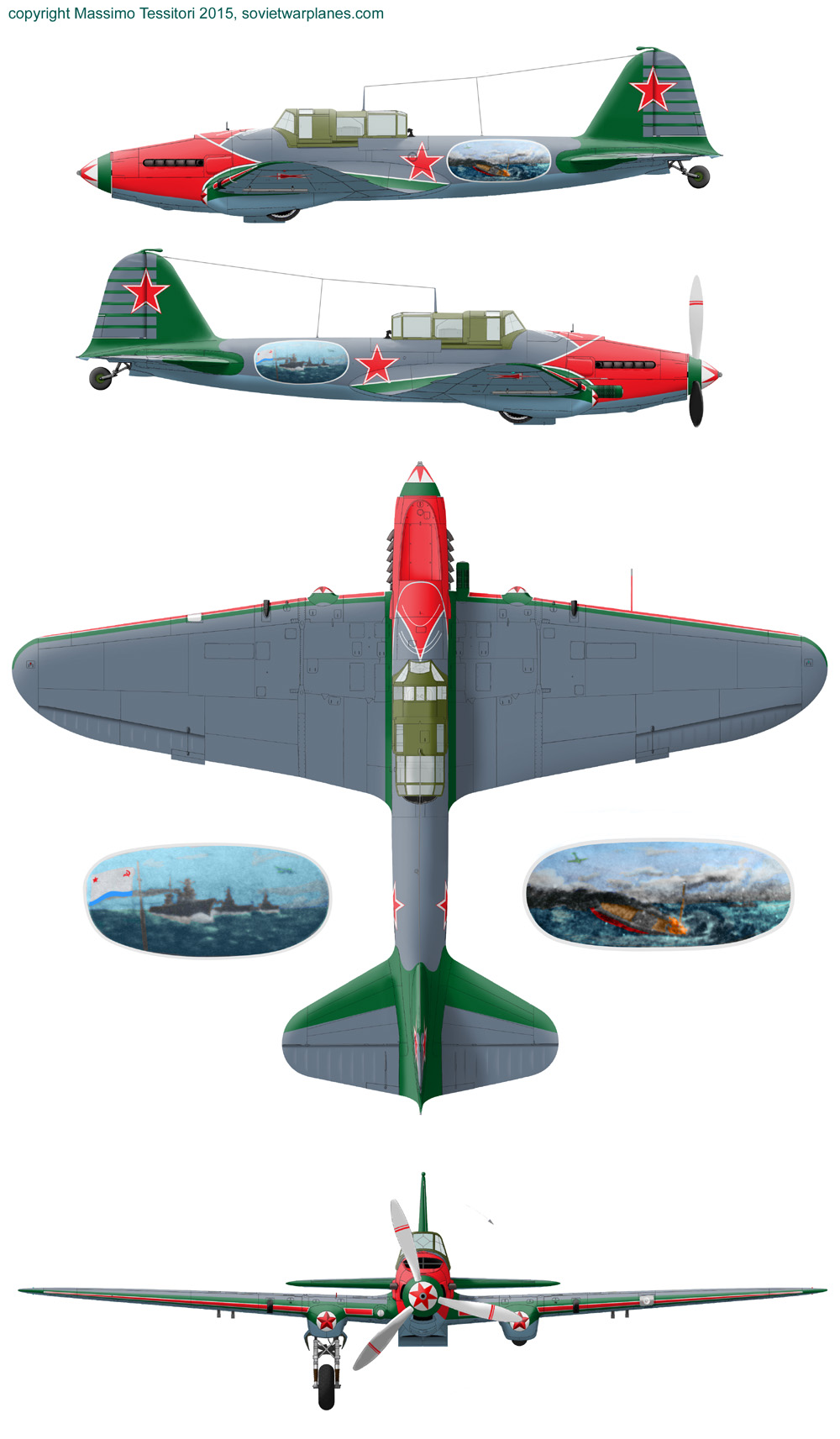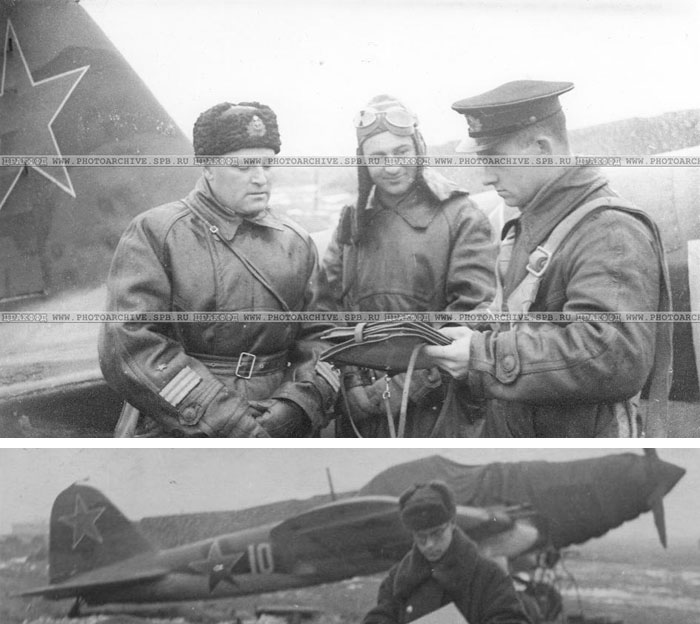
N.G.Stepanyan, 57 PShAP of Red Banner Baltic Fleet (KBF) at the Leningrad airport in November 1941.
Around him, G.S.Nelson and Potapov.
Below, an image of his plane n.10. This seem built in Z.18 around September 1941. It has a wooden fuselage (but we see a repair close to the star fixed by small nails), unusually large red stars with white outlines and a sharp camouflage with an horizontal band on its tail. The canopy is likely of the early style.

A drawing of Stepanyan's 10. Where not visible on the photo, the camouflage was drawn as a mix of similar planes.
Click on the profile to see a larger 3 views drawing.
Il-2 red 55 of N.G.Stepanyan, 57 PShAP. VVS KBF, Baltic/Leningrad area, date unknown (presumably 1942).
The photo shows the central part of the fuselage, the red 55 with white outline and the star with white outline that suggests a plane built by Z.18. The underlying camouflage is unrecognizable, but the plane appears oversprayed with faint blotches of white washable paint, partially extended over the markings.
On the drawing, the presence of the intake filter, aiming lines and VV-1 is merely hypothetical.
Thanks to Vitaliy Timoshenko for the informations and the image.
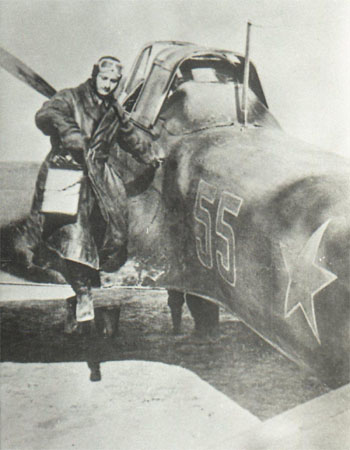

And finally, a photo of the plane that he flew when he was an instructor at a VVS-KBF school, between the beginning of 1943 and April 1944. The unusual livery of this plane is evident.
The plane is of a variant built between late 1942 and July 1943: twoseater, with tunnel-style canopy with short end as from Z.18 productuion, short aerial mast, metallic straight wings.
This plane and its painting was long debated at http://sovietwarplanes.com/board/index.php?topic=995.0 and following pages.
Although blurried, this is the only image where the tail of this plane appears.
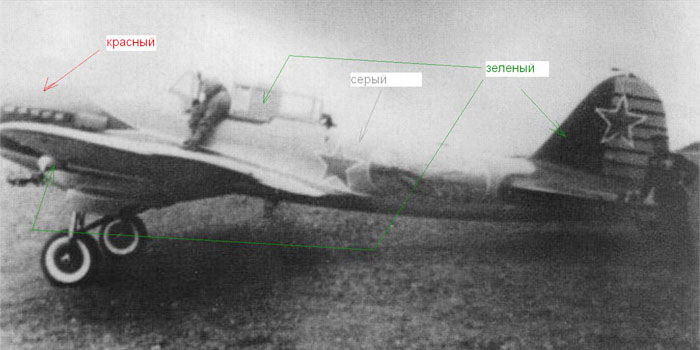
These annotations on colors are from Vitaliy Timoshenko, that took as sources some sketches made on the base of interviews to pilot Mazurenko http://www.warheroes.ru/hero/hero.asp?Hero_id=133 that served in the same unit (57 ShAP KBF) up to 1943 and said to have seen plane in 1944, and of a technician.
Although uncomplete and vague, I consider this information reliable enough for its source, and also for the complete lack of alternative informations.
According to the sketches, the nose was red, while the tail, wing leading edge and canopy strut were green and the uppersurface was grey. Although not said in the sketch, it's likely that the green of tails and wings was a dark glossy emerald green, while the one of the canopy, matt and faded, was the usual AMT-4 or A-24m of factory.

This photo of the right side is much sharper, allowing to see some details as the painting on the rear fuselage, the supposedly red triangle over the nose and the wing's upper surface, that appears uniformly painted in grey. The white aiming lines over the nose and the VV-1 external aiming device look preserved.
A lighter stripe on the wingroot appear light and on slight reliev, and cohincides with a panel of the wing; around it, we see some dark shades that could be wearing or eeflections on the wing's uppersurface.
It is likely that the stripe on relief is a sort of carpet to prevent the wearing of the paint, but it's unclear if it was glued on the plane as a walkway or simply posed on it.
The wing fillet appears more or less light as the wings and fuselage, but it's likely that this is due to a reflection, because it appears as dark (green?) on other photos.
The landing gear legs are visible; it's clear that their front part was painted white, while their rear part preserved the original color (grey A-14?). The white painting of ytre sides is evident too, while the wheel disks are thought to be painted dark green as usual.

This photo shows interesting details of the nose and of the wing leading edges.
The red star on the spinner has 6 braces; this allowed to use the prop blades as geometric reference points to make a more symmetrical star. Viewed from the sides, the difference between a 6-braced star and a 5-braced one is scarcely visible.
On other versions of this photo, the star on the spinner looks to have a white contour, but this is probably due to photo retouch. The background of all stars looks glossy white (or, less likely, silver).
We see clearly that no any gun barrel protrudes from the wings, so the VVYa-23 guns were surely removed. The gun fairing looks painted matt black.
It seems that there is a small carpet on the upper surface of the left wing.
Note the front of the blades, painted white or silver with some (red?) arcs painted on by brush. The rear of the blades doesn't appear on available photos, probably it was black to avoid reflections.

Stepanyan sitting on the wing of his plane. We see a thin metal wire fixing the screws on the spinner, a surprising thing on a part so subject to air drag.
The photo gives the idea that the rear part of the spinner was slightly darker than the engine cowling and the star, but this is questionable.
The extreme front of the spinner and the starter tooth look natural metal or painted aluminium.
The air filter on the right wing root looks all painted with glossy dark green, apart for its front doors that looks unpainted metal.

Another photo of Stepanyan and his plane, perhaps taken in the same photo session of the previous one.
The most interesting characteristic is that the stars on the nacelles are of Kremlin style, while they appear as uniform red on other photos. Probably there was an evolition in the painting of this plane during its life, and the photo with kremlin stars are successive to those with uniform stars.
Note that the front of the landing gear leg was painted white, as a ring on the tyre's sides the rear part. as the remaining part of the structure, preserved the original dark color, probably grey A-14.
Note how the glossy dark green on the leading edge goes on the nacelle sides; on the inner side it is connected to the leading edge, while on the outer side it continues into a stripe on the side of the nacelle.
The front of the leading edge has a stripe of another color, probably red, with a thin white contour.
Another white line separes the side of the engine cowling from the wing fillet, suggesting that they were of different color (probably red and dark green); this white line continues on the fuselage sides. The thin white line between the fillet and the wing upper surface was probably a simple reflection of the sky on the step between them on the glossy surface, and not a white line..
The photo shows the muzzle of the 7.62 mm ShKAS on the leading edge, so this light weapon was preserved while the VYa-23 guns were removed.

Stepanyan mounting (or dismounting) on his plane. We see that the struts of the canopy are matt and not too dark, compatible with faded AMT-4 or A-24m .
The image shows that the rail of the sliding hood was somewhat darker than the hood itself; this could be due to a repainting with new paint or to grease cleaned with a cloth.
The machine gun was dismounted from its support, due to the use of this plane for training, far from the front.
The last window of the rear canopy is very narrow, typical of Il-2s built in Zavod 18 between the end of 1942 and July 1943; this implies that the wings were of metal type, as typical of this factory.
The thin red outline arould the white outline of the red star is clearly visible, and suggests that the photo was taken after August 1943, when that type of star was introduced.
The image suggests that the antenna mast was of the same grey of the fuselage.
Differently of other photos, the grey paint of the fuselage gives the idea to be gloss.

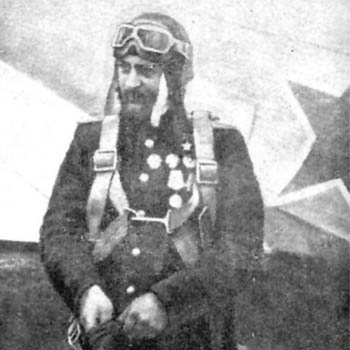
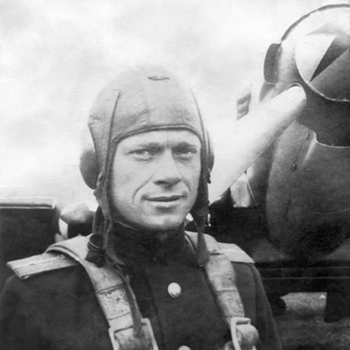
Left:
N.V.Stepanyan on the side of this plane. The photo was erroneously dated 1942, but it's likely of the second half of 1943.
Note the dark stripe on the fillet of the wing; this is not visible on the left, probably due to reflection on its glossy surface.
Right:
Pilot s.lieutenant V.M. Skopintsev poses aside the plane of Stepanyan in a photo dated 1943. He made a course in the 3rd Naval Air School in 1943.

This photo is dated April of 1944; perhaps it is a farewell ceremony, because Stepanyan left the school in April 1944 to become commender of the 47 ShAP KBF.

A detail of the painting on the left side of the plane.
We see an enemy ship sunking in flames under the attack of an Il-2, with its rear deck in evidence, and other ships in distance. The shape is an irregular oval, probably a sort of ellipse made with arcs of circles.

Left:
a detail of the painting on the right side of the plane.
Here we see friendly ships escorted by an Il-2; the white-blue-red flag of the Soviet Navy is well visible on the left.
Right:
a detail of the tail. Seems thar the dark green extends on a wide band on the leading edgeof the stabilizers.

At the end,. this is my reconstruction of the look of the plane.
While the choice of light blue (AMT-7) red (AII red or A-13) and olive green (AMT-4 or A-24m) don't give too much uncertainty, the choice of the shades of grey (AMNT-11? A-14?) and of emerald green (a mix of A-7 and black?) are more debatable. Other debatable points are the presence of green on the spinner, and the shape of the green part of the stabilizers. Another option is given by the Kremlin-style stars on the nacelles, that seem to have appeared as uniformly red in some time.
